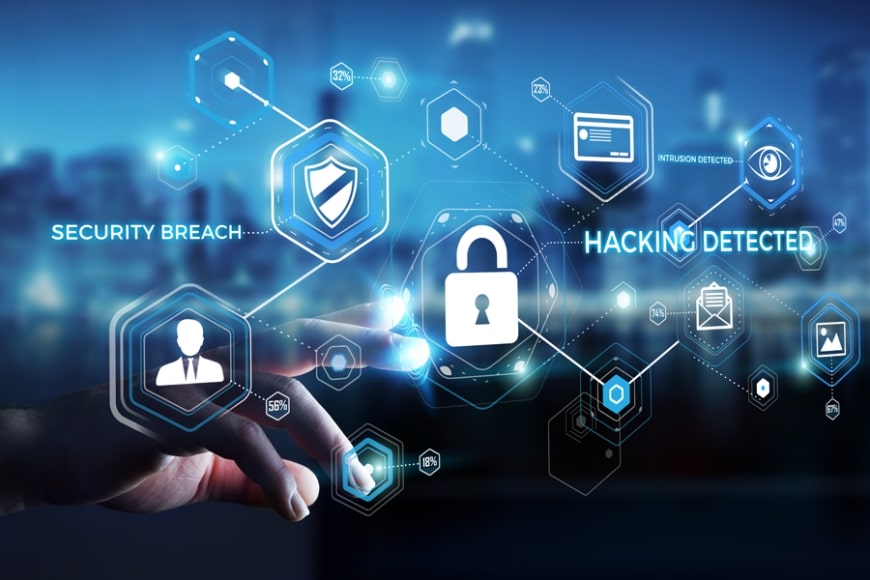Security Solution
A security solution encompasses technologies, processes, and practices designed to protect data, systems, and physical spaces from unauthorized access, damage, or theft. Security solutions vary widely based on the area of application—ranging from cybersecurity to physical security systems.
1. Network Security Solutions
- Purpose: Protects an organization’s internal network and data from cyber threats, unauthorized access, and data breaches.
- Key Solutions:
- Firewalls: Monitor and control incoming and outgoing network traffic based on security rules.
- Intrusion Detection and Prevention Systems (IDPS): Detect and respond to potential security breaches within the network.
- VPNs (Virtual Private Networks): Securely connects remote users to the organization’s network, encrypting data in transit.
- Network Access Control (NAC): Ensures only authorized devices and users access the network.
2. Endpoint Security Solutions
- Purpose: Secures endpoints (like computers, smartphones, and tablets) that connect to the network, preventing malware, unauthorized access, and data leaks.
- Key Solutions:
- Antivirus and Anti-malware Software: Protects devices against malware, ransomware, and viruses.
- Endpoint Detection and Response (EDR): Provides advanced threat detection and response for endpoint security.
- Mobile Device Management (MDM): Secures and manages mobile devices and data access, particularly for BYOD (Bring Your Own Device) policies.
3. Identity and Access Management (IAM)
- Purpose: Ensures only authenticated and authorized users have access to critical systems and data.
- Key Solutions:
- Single Sign-On (SSO): Allows users to log in once and access multiple applications without re-authenticating.
- Multi-Factor Authentication (MFA): Adds an extra layer of authentication, like biometrics or OTPs, beyond just passwords.
- Role-Based Access Control (RBAC): Assigns access permissions based on user roles to limit access to sensitive information.
- Privileged Access Management (PAM): Manages and monitors access to sensitive systems by privileged users, such as administrators.
4. Data Security Solutions
- Purpose: Protects data from unauthorized access, alteration, and theft.
- Key Solutions:
- Data Encryption: Secures data in transit and at rest by converting it into unreadable code accessible only with a decryption key.
- Data Loss Prevention (DLP): Detects and prevents sensitive data from being shared, moved, or accessed inappropriately.
- Cloud Security: Protects data stored in cloud environments, often including encryption, access management, and data backup.
- Data Masking: Masks sensitive data to protect privacy while allowing data to be used for testing, training, or development.
5. Physical Security Solutions
- Purpose: Protects physical locations and assets from unauthorized access, theft, or damage.
- Key Solutions:
- Access Control Systems: Restrict access to secure areas using ID cards, biometrics, or keypads.
- Surveillance Cameras (CCTV): Monitors facilities to deter crime and record incidents.
- Alarm Systems: Alerts security personnel to unauthorized entry, fires, or other emergencies.
- Perimeter Security: Includes fences, gates, and barriers to secure the external perimeter of a property.
6. Application Security Solutions
- Purpose: Protects applications from vulnerabilities and threats, especially in web and mobile applications.
- Key Solutions:
- Web Application Firewalls (WAF): Protects web applications by filtering and monitoring HTTP traffic and defending against common threats like SQL injection and cross-site scripting.
- Code Review and Application Testing: Identifies and mitigates vulnerabilities in the development process through testing (e.g., static application security testing).
- API Security: Secures APIs from unauthorized access and exploits, which is especially important in cloud and mobile applications.
- Runtime Application Self-Protection (RASP): Provides real-time protection by detecting and blocking threats as applications are running.
7. Threat Intelligence Solutions
- Purpose: Provides insights and proactive measures to protect against cyber threats by collecting and analyzing data on potential attackers, tactics, and threats.
- Key Solutions:
- Threat Intelligence Platforms: Aggregates and analyzes data to detect new threats and provide alerts.
- Security Information and Event Management (SIEM): Collects and analyzes log data to detect and respond to security incidents.
- Threat Hunting: Actively seeks out and identifies hidden threats within the network to prevent attacks.
8. Disaster Recovery and Business Continuity
- Purpose: Ensures that critical business operations can continue during and after a disaster or attack, minimizing downtime and data loss.
- Key Solutions:
- Backup and Recovery Solutions: Regularly backs up data and provides mechanisms to recover it after data loss incidents.
- Disaster Recovery Plans (DRP): Details steps and resources needed to recover systems and resume operations quickly.
- Business Continuity Plans (BCP): Ensures essential business functions continue, even under disruptive circumstances.
9. User Education and Awareness
- Purpose: Educates employees and users about security risks, fostering a security-conscious culture to reduce risk from human error.
- Key Solutions:
- Security Awareness Training: Educates users about phishing, malware, and secure online behaviors.
- Simulated Phishing Campaigns: Tests employees’ responses to phishing emails and provides training based on results.
- Regular Security Updates and Policies: Keeps employees informed about security policies and encourages compliance with best practices.
Choosing the Right Security Solution
Selecting a security solution depends on the specific needs, risks, and size of an organization. A comprehensive security approach often combines several types of solutions to cover all aspects of security, from physical access to data protection and user education. It’s essential to regularly update and adapt security solutions to address evolving threats and changes in technology.

